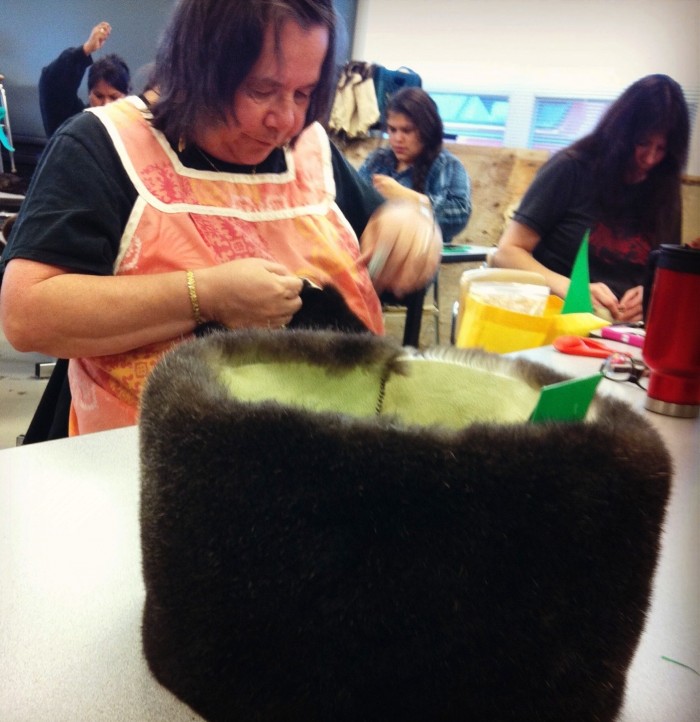
The U.S. Fish & Wildlife Service has a new proposal for defining handicrafts made out of sea otter pelts. The agency sets rules for hunting of sea otters and other protected marine mammals.
Its rules allow coastal Natives to hunt otters for traditional and subsistence use. And it permits pelts to be sold to non-Natives after they’re significantly altered.
But part of the rules are hard to decipher. And different interpretations have led to citations, fines and other legal action.
Sealaska Heritage Institute President Rosita Worl is part of a region-wide effort to expand the otter business.
“Our desire is to move away from the vague language that we’ve had that has resulted in some consternation with the hunters and with the craftspeople in not knowing what’s legally acceptable,” she says.

The Fish & Wildlife Service has released new wording and is taking comments through May 17th.
It defines “substantially altered” as weaving, carving, sewing, lacing, beading, drawing, painting and some other methods.
Fish and Wildlife’s Bruce Woods says artisans can make mittens, hats, gloves, purses and scarves. But it prohibits some larger items.
“If someone simply drew a picture on the back of a tanned sea otter hide and attempted to sell that as significantly altered, someone who was running a souvenir factory conceivably could buy those hides and turn them into a whole series of little otter dolls and sell them in competition (with) people who are doing the work as a handicraft,” Woods says.
Woods says Native craftspeople could work in cooperatives or other groups. But they could not use extensive mechanization or divide tasks in anything like an assembly line.
He says the new rules include input from hunters and other groups.
“So the service has been meeting with some handicrafter groups and other interested parties in an attempt to refine that definition and sort of take some of the angst out of the community of crafters who may not be certain that what they’re manufacturing is legal,” he says.
Some craftspeople are not happy with the proposed rules.
Worl says crafters worked with the Indigenous People’s Council for Marine Mammals and other organizations to come up with their own, more flexible proposal. But that’s not the Fish and Wildlife Service draft.
“All of us are busy studying it right now, but there’s a lot of unhappiness that it came out of the blue. So it’s like we’re back to the drawing board,” Worl says. (Hear a report from the last round of otter handicraft proposals.)
The heritage institute is training tribal members to sew otter pelts to help build a cottage industry, especially in economically depressed villages.
Worl says the workshops have waiting lists and more are planned.
The effort comes as hunters, lawmakers and scientists debate the impacts of rapid otter population growth in Southeast and some other parts of the state. Bills in the House and Senate would subsidize hunting with a $100-per-pelt bounty.
